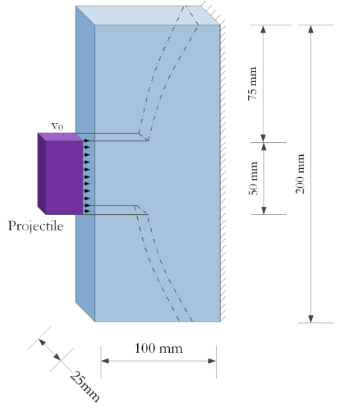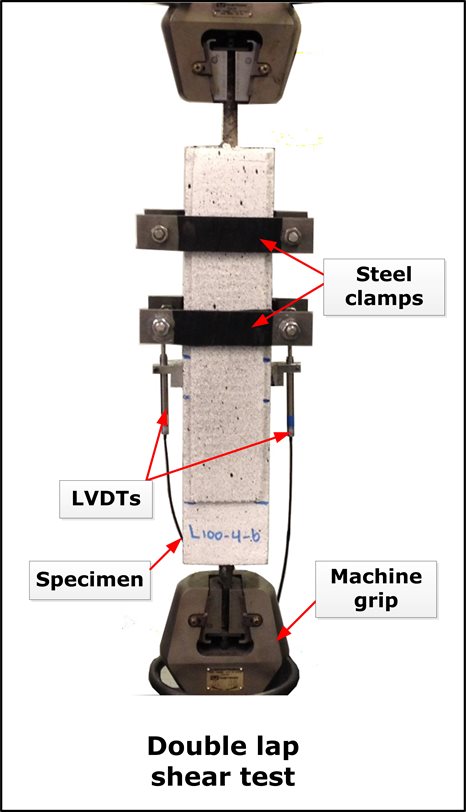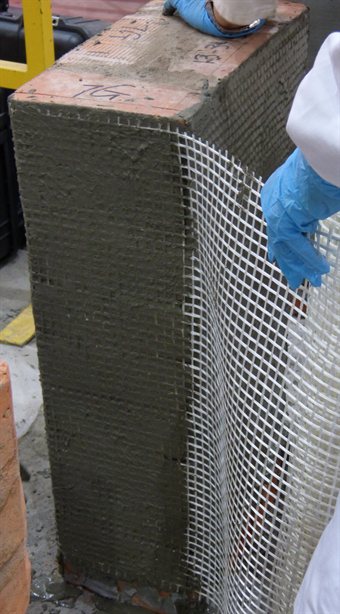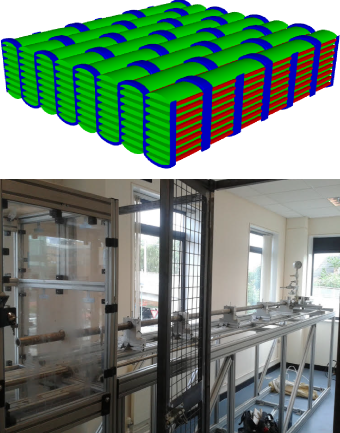Advanced Construction Materials
Research includes:
- Advanced composite materials as strengthening
- Seismic retrofitting
- Reinforcement materials of concrete
- Masonry structures
- Advanced composite structures
- Multifunctional materials and structures
- Cellular materials and structures
Projects
A multiscale Meshless Method for Brittle Fracture
Summary:
Brittle fracture is one of the main failure mechanisms pertaining to materials and structural components.
Although a common phenomenon in many natural and engineering processes, robust and accurate simulation of the evolution of brittle fracture, from crack initiation and crack propagation and crack branching has been proven to be a challenging task.
In this project, the efficiency of implementing a novel multiscale meshless method alongside proper mathematical descriptions of crack surfaces is examined in terms of numerical efficiency, source code implementation and accuracy.
PhD Student:
Supervisor:

Bond Between Cement-Based Textile Composites and Concrete Substrates
Summary:
The use of Fiber Reinforced Polymers (FRPs) as externally bonded reinforcement for retrofitting existing concrete and masonry structures has become very popular technique over the last two decades, thanks to the favourable properties offered by these materials.
However, FRPs entails a few drawbacks which are associated with the epoxy resins used to bind the fibers, i.e. poor behaviour of at high temperature; high costs; incompatibility with substrate materials.
To address such problems, a new structural material, the so-called Textile Reinforced Mortar (TRM) has been recently developed.
TRM combines advanced fibers in form of textiles (with open-mesh configuration) with inorganic matrices, such as cement-based mortars. Nevertheless, due to granularity of cement used, the bond between TRM and concrete has become an issue. This PhD study aims to investigate the bond between TRM and concrete substrates using double lap shear test.
Key investigated parameters include:
- the number of layers,
- the bond length
- the concrete surface preparation
- the concrete compressive strength
- the textile surface condition (i.e. coated and uncoated)
- the anchoring of TRM through wrapping
PhD Student:
- Raoof, Saad Mahmood Raoof
Supervisor: Dr Dionysios Bournas

Confinement of Masonry Columns with Textile-Reinforced Mortar (TRM) Jackets
Summary:
Jacketing of masonry columns in order to enhance their axial capacity and improve their performance under earthquakes, is a popular retrofitting solution.
The conventional strengthening technique though, which comprise the use of shotcrete layers, entails few drawbacks such as the corrosion of the steel reinforcement and the significant increase of the column thickness (up to 50%). To overcome these drawbacks the use of textile-reinforced mortar jackets is suggested.
The result is a very thin (up to 10 mm) jacket with non-corrosive high-strength fibers (i.e. carbon, AR-glass or basalt), which effectively contribute to the load-carrying capacity of the columns.
A broad experimental campaign is currently under investigation, with the main parameters being the number of textile layers and the column dimensions.
PhD Student:
Supervisor:

Deformation and Collapse of 3D Woven Composites Under Quasi-Static and Dynamic Impact Loading
Summary:
An experimental and numerical investigation was undertaken in order to develop the understanding of the behaviour of orthogonal 3D woven composites under quasi-static tension/compression, out-of-plane bending and dynamic soft and multi-hit impact load cases.
A pressurised gas gun system was designed and developed at the University of Nottingham in order to conduct dynamic impact experiments on composite beam and circular plate samples.
A numerical modelling strategy based on an established continuum damage mechanics framework was also developed and validated with experimental tests, providing further insights into the results. The through-thickness reinforcement of the 3D weave was shown to provide reductions in the propagation of damage throughout the material.
PhD Student:
Supervisor:

Flexural Strengthening of Reinforced Concrete Slabs with Textile-Reinforced Mortar (TRM)
Summary:
The aim of this project is to investigate the effectiveness of a new strengthening technique in increasing the flexural capacity of reinforced concrete slabs. The need for enhancing their strength comes from poor initial design or deterioration due to aging.
By bonding thin layers of high-strength, lightweight textiles (i.e. carbon or glass) on the bottom of the slabs with the use of cement mortars, the flexural capacity significantly increases.
The project includes testing of large-scale square slabs (1.8 m side length) under two-way bending. Key parameters of the study are:
- the number of textile layers,
- the material of the textile fibers
- the presence of a cut-opening at the centre of the slab.
PhD Student:
Supervisor:
Publications